S1 Artspace is pleased to present Traces of a Cathode, an international group exhibition of recent works by Paulo Arraiano, Diogo da Cruz, Olga Grotova, Gweni Llwyd, Daniel de Paula & David Rickard, curated by artist Joseph Cutts.
Developed from Cutts’ ongoing research, the exhibition will provide an understanding of the cycle and formation of electronic waste (obsolete or discarded electronic devices) and the processes involved from the mining and extraction of minerals, through to the manufacturing and product distribution setup. Discarded remnants slowly sinking to leave something behind, undermining and deteriorating our beds and water passages.
Traces of a Cathode will address the improper ‘methods’ of electronic recycling globally and highlight the need for clearer and cleaner methods of recycling in our local communities and the roles individuals can play to decrease their carbon footprint.
In this exhibition, Diogo da Cruz presents work from a science-fiction series that interweaves fragments of an afrofuturistic myth of an underwater civilisation with concerns around the possible consequences of deep-sea mining; Paulo Arraiano’s Postfossil series are part of a body of work and research on the idea of extinction and the binomial materiality and immateriality. His two-dimensional impression of an image, refers to a natural or artificial fossil, something previously characterised by its matter and three-dimension; Olga Grotova’s Seven Meters is a series of large scale paintings exploring how history is recorded in soil. Wars, climate change, nuclear tests, pollution, human labour are all chronicled in the layers of soil, the soil ‘horizons’.
The works developed within Daniel de Paula’s power-flow series set together fragments of infrastructural subterranean (or submarine) data cables – responsible for the fast circulation of information that control our economical system and media communication – and fulgurites, natural masses of vitrified or fused soil that result from the discharge of electrical lightings over sand, evidence of the natural flow of time inside geological formations; Gweni Llwyd’s Silicon Retina flips the subterranean into suspended space. The moving image work explores the porous boundary between nature and technology, particularly in the landscape, weaving a narrative composed of mechanical vibrations, organic rhythms and biomimetic pulses.
David Rickard’s Post Revolution considers the flow and destination of material resources. Cast from a single aluminium car wheel the material that forms the work has endured a lifetime in physical revolution before being transformed into a static rectangular block.
The artworks depicted above give way to a host of globes migrating across the gallery floor. Sourced from diverse countries and eras, Rickard’s work Flotsam brings together the various cultures, histories and borders imprinted on their surfaces, as they repeatedly impact with each other and the confines of the gallery space.
As a contrast to the exhibiting works, Traces of a Cathode will also act as a carrier of electronic waste (e-waste), as we welcome you to deposit your redundant electronic items at our drop off point within the gallery space. Following the exhibition, S1 Artspace will partner with Aspire Sheffield (a Social Enterprise that specialises in computer recycling) to ensure your electronic goods are recycled appropriately or refurbished for a longer lifespan.
Click here for more information on the electronic goods we can accept, our partnership with Aspire Sheffield and the waste management process.
This project is supported using public funding by the National Lottery through Arts Council England. Additional support has been generously provided by Sheffield Town Trust; JG Graves Charitable Trust; Aspire Sheffield; Francesca Minini, Milan; Forma; Pack&Send; Heritage Park School; Signs Express; Museums Sheffield & Sheffield Hallam University.
Paulo Arraiano is a Portuguese artist based in Lisbon. He has participated in several exhibitions, both solo and collective including Uma Lulik_, Lisbon; Dimora Artica, Milan; La Casa Encendida, Madrid; MAAT Museum, Lisbon; Berardo Museum, Lisbon; Vellum/LA, Los Angeles; Wilhelm Hack Museum, Ludwigshafen. Arraiano’s work is represented by Uma Lulik & Dimora Artica / Candy Shake Gallery. He is co-founder of Re_act Contemporary, an art laboratory & residency programme based in the Azores, WATA Publishing, founder of No.Stereo, an independent artist-run platform & Course Director for New Media in Contemporary Arts at Cascais School Of Arts and Design
Diogo da Cruz is a Portuguese artist based in Munich & Lisbon. His work has been in numerous exhibitions throughout Europe, Russia and Uruguay, including the solo exhibitions: our water will meet, Walk&Talk, Azores (2022); looking up from underneath, Forum Arte Braga (2021); Wisdom Warriors, Ruine München – Various Others, Munich (2019). Group exhibitions in institutions include: arthereistanbul in Turkey (2021); Serralves Museum, Porto (2019) & Espacio de Arte Contemporáne, Montevideo-Uruguay (2019).
Olga Grotova, born in Chelyabinsk, is an artist, poet and activist living and working in London. Recent exhibitions & projects include Studio Voltaire, London (2023); Les Rencontres d’Arles (2022); Garage Museum of Contemporary Art, Moscow (2021); Oslo Kunstforening (2019); Mimosa House, London (2018).
Gweni Llwyd is a Welsh artist based in Rotterdam. Recent projects, exhibitions, screenings & awards include: Elan Links Residency, Elan Valley (Upcoming 2023); I Must Be Living Twice, European Cultural Centre, 59th Venice Biennale (2022); One Day Home, W139, Amsterdam (2022); VRAL, Milan Machinima Festival (2021); Silicon Retina, Green Man Festival (2021); Jerwood UNITe, g39, Cardiff (2021). In 2018 Gweni was the recipient of the National Eisteddfod of Wales Young Artist Scholarship, ABF Step Change Fellowship and the Arts Council of Wales Brian Ross Memorial Award.
Daniel de Paula is a Brazilian visual artist and researcher. de Paula has been awarded the Mondriaan Funds Proven Talent Award and has exhibited widely at institutions such as MASP, São Paulo; The Renaissance Society, Chicago; Padiglione d’Arte Contemporanea, Milan; Kunsthal Gent; The Arts Club of Chicago; Estação Pinacoteca, São Paulo; and the Lyon Biennale (2022). His work is represented by Francesca Minini Gallery, Jaqueline Martins Gallery and Lumen Travo Gallery.
David Rickard is a New Zealand artist who lives and works in London. Recent exhibitions include; In the Air, The Wellcome Collection, London (2022); Landfall, CØPPERFIELD, London UK (2022); (in)visible fields, Galleria Michela Rizzo, Venice, Italy (2022); Inaspettatamente (Unexpectedly), Cloud Seven, Frederic de Goldschmidt Collection, Brussels (2021); Brief Encounters 21, Lustwarande, Holland (2021); A Circle Called Zero, No Lugar, Quito, Ecuador (2021); Feuilleton, MACRO Rome and Spoleto Italy (2021).
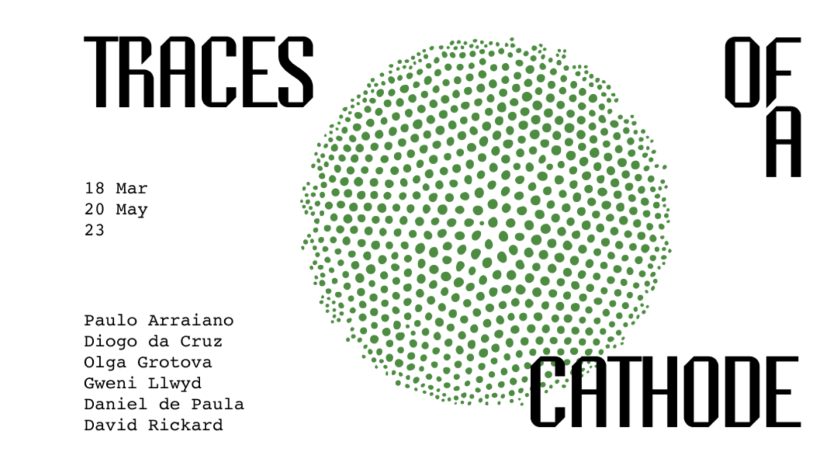 'Traces of a Cathode' (2023). Image design: Josh Holmes, Joseph Cutts / Image credit: Diogo da Cruz
'Traces of a Cathode' (2023). Image design: Josh Holmes, Joseph Cutts / Image credit: Diogo da Cruz
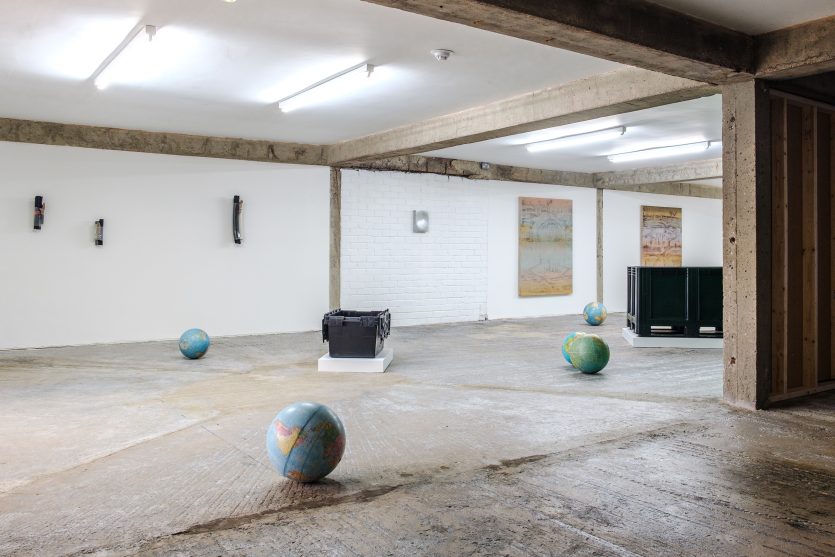 Installation view - 'Traces of a Cathode', S1 Artspace (2023). Image credit: James Clarkson
Installation view - 'Traces of a Cathode', S1 Artspace (2023). Image credit: James Clarkson
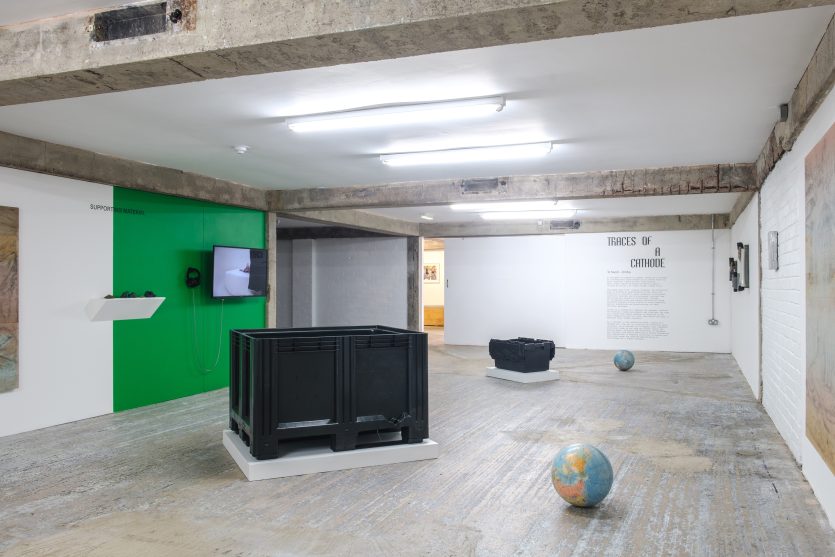 Installation view - 'Traces of a Cathode', S1 Artspace (2023). Image credit: James Clarkson
Installation view - 'Traces of a Cathode', S1 Artspace (2023). Image credit: James Clarkson
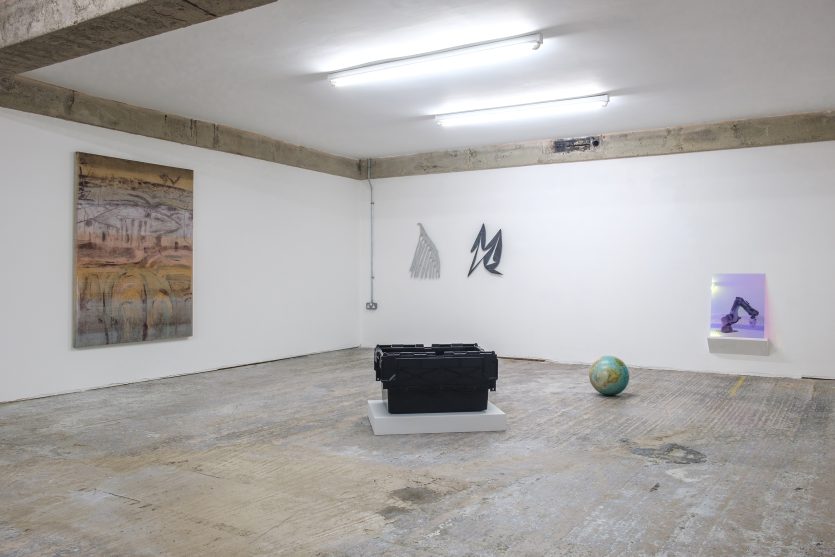 Installation view - 'Traces of a Cathode', S1 Artspace (2023). Image credit: James Clarkson
Installation view - 'Traces of a Cathode', S1 Artspace (2023). Image credit: James Clarkson
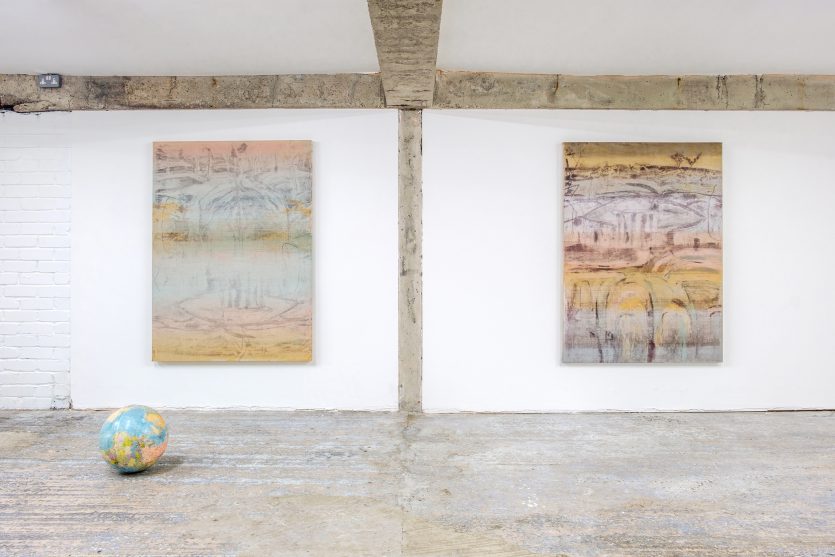 Installation view - 'Traces of a Cathode', S1 Artspace (2023). Image credit: James Clarkson
Installation view - 'Traces of a Cathode', S1 Artspace (2023). Image credit: James Clarkson
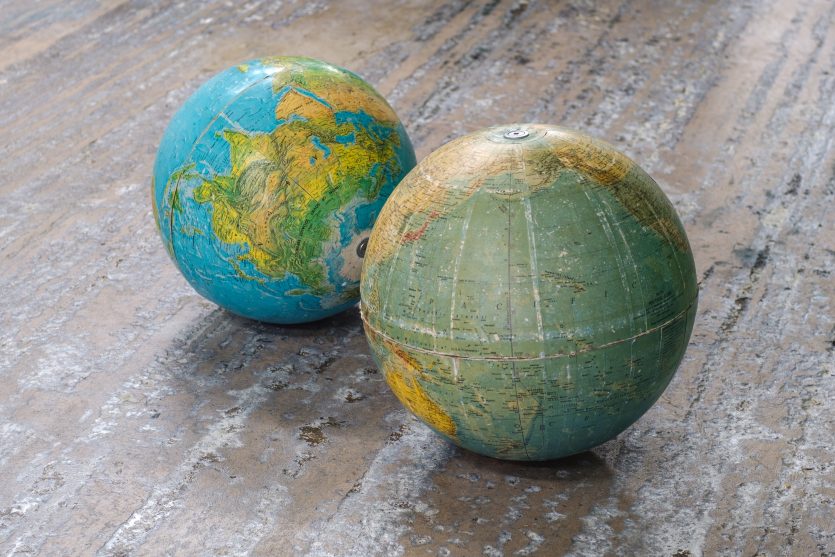 'Flotsam' (2022) - 'Traces of a Cathode', S1 Artspace (2023). Image credit: James Clarkson
'Flotsam' (2022) - 'Traces of a Cathode', S1 Artspace (2023). Image credit: James Clarkson
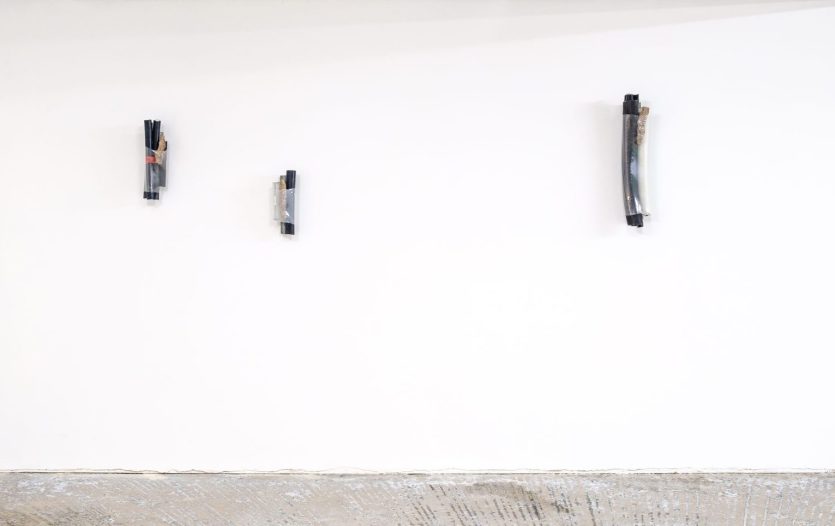 'power-flow' (2022) - 'Traces of a Cathode', S1 Artspace (2023). Image credit: James Clarkson
'power-flow' (2022) - 'Traces of a Cathode', S1 Artspace (2023). Image credit: James Clarkson
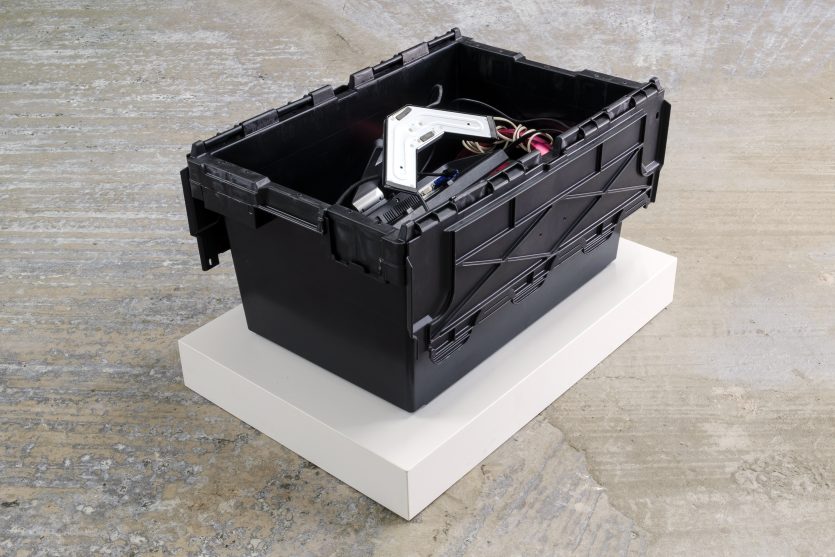 Discarded e-waste - 'Traces of a Cathode', S1 Artspace (2023). Image credit: James Clarkson
Discarded e-waste - 'Traces of a Cathode', S1 Artspace (2023). Image credit: James Clarkson
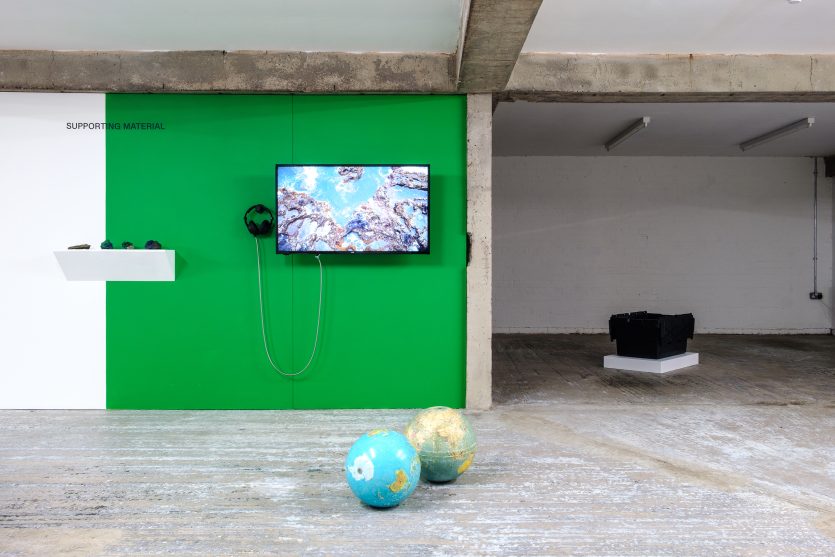 Installation view - 'Traces of a Cathode', S1 Artspace (2023). Image credit: James Clarkson
Installation view - 'Traces of a Cathode', S1 Artspace (2023). Image credit: James Clarkson
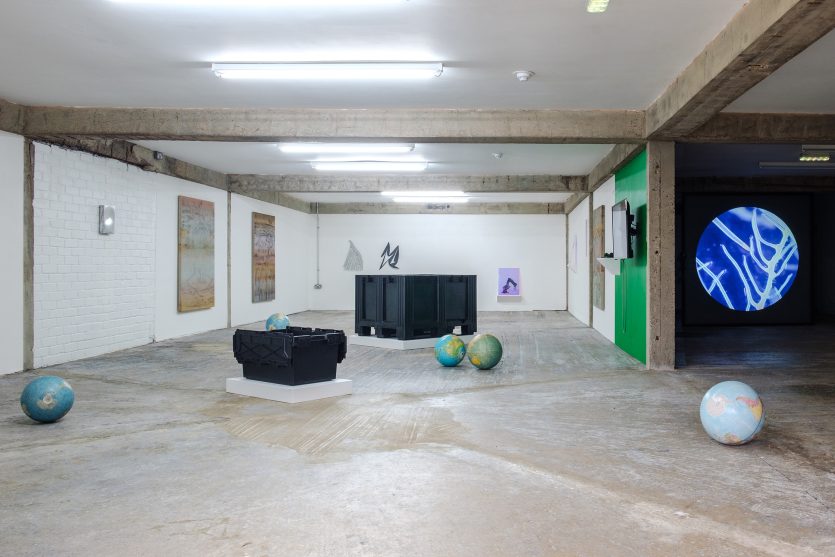 Installation view - 'Traces of a Cathode', S1 Artspace (2023). Image credit: James Clarkson
Installation view - 'Traces of a Cathode', S1 Artspace (2023). Image credit: James Clarkson